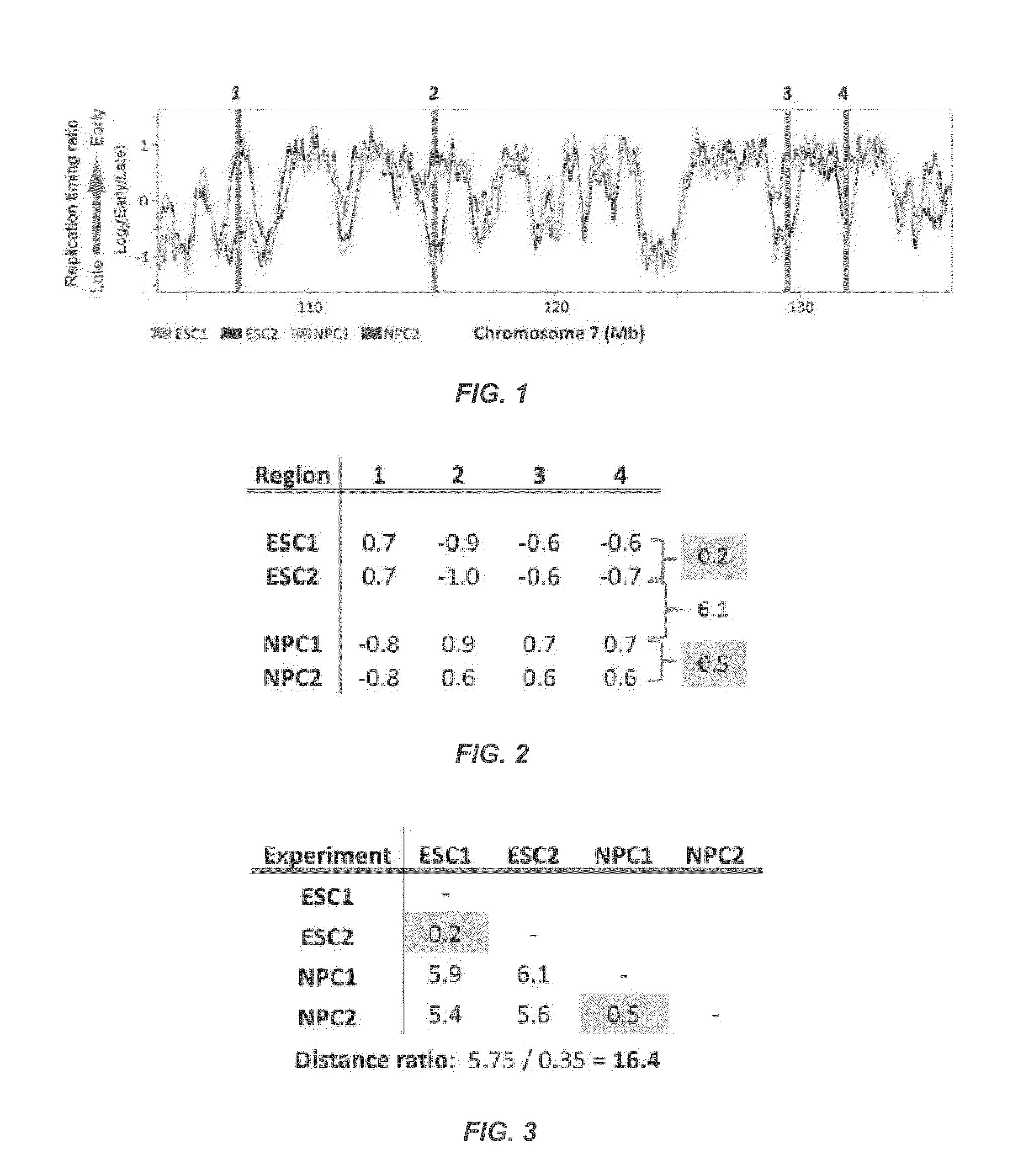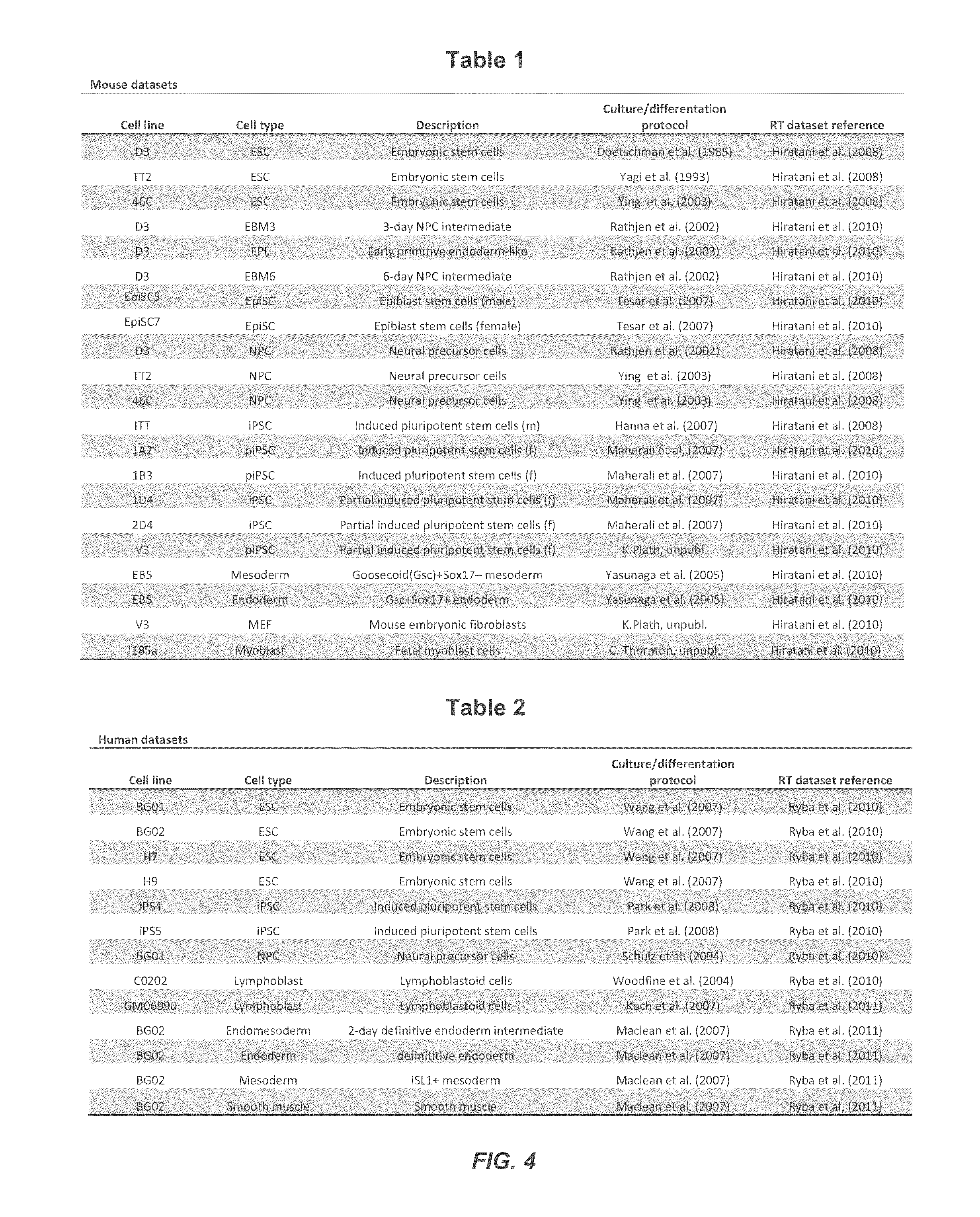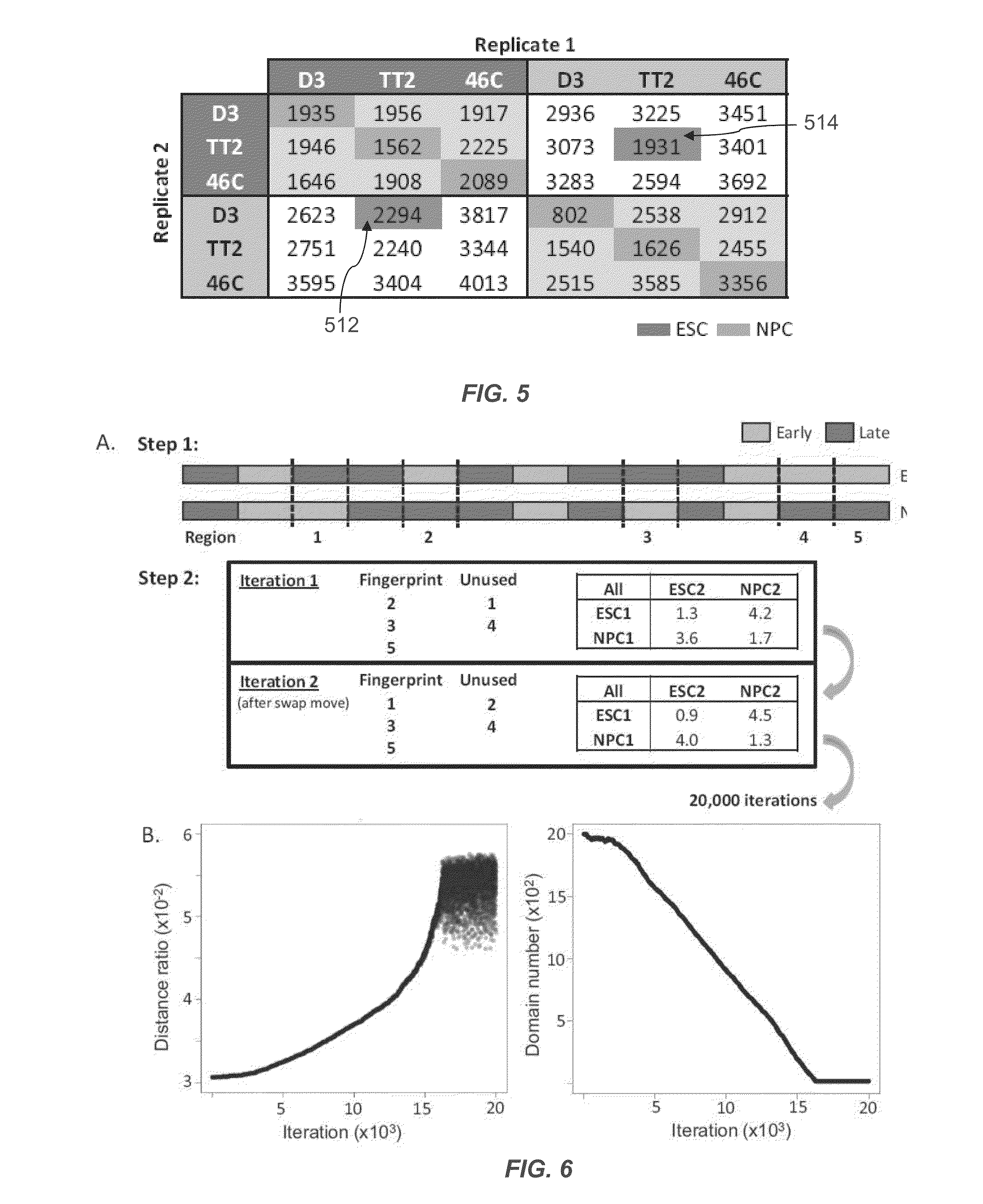Fingerprint for cell identity and pluripotency
- Summary
- Abstract
- Description
- Claims
- Application Information
AI Technical Summary
Benefits of technology
Problems solved by technology
Method used
Image
Examples
example
Methods
Cell Culture and Differentiation
[0123]Mouse replication timing datasets are described in Hiratani et al., 2010. Briefly, mouse embryonic stem cells (ESCs) from D3, TT2, and 46C cell lines were subjected to either 6-day (46C) or 9-day (D3, TT2) neural differentiation protocols to generate neural progenitor cells (NPCs) [4,5]. For D3, intermediates were also profiled after 3 (EBM3) and 6 (EBM6) days of differentiation. Muscle stem cells (myoblast) and induced pluripotent stem cells (iPSCs) reprogrammed from fibroblasts were collected as described for human and mouse [38-40]. For human timing datasets, neural precursors were differentiated from BG01 ESCs as described in Schulz et al., 2004 [3,41]. Lymphoblast cell lines GM06990 and C0202 were cultured as previously described [2,42]. Differentiation of BG02 hESCs to mesendoderm (DE2) and definitive endoderm (DE4) was performed by switching from defined media (McLean et al. [20]) to DMEM / F12+100 ng / mL Activin A 20 ng / mL Fgf2 for t...
PUM
 Login to View More
Login to View More Abstract
Description
Claims
Application Information
 Login to View More
Login to View More - R&D
- Intellectual Property
- Life Sciences
- Materials
- Tech Scout
- Unparalleled Data Quality
- Higher Quality Content
- 60% Fewer Hallucinations
Browse by: Latest US Patents, China's latest patents, Technical Efficacy Thesaurus, Application Domain, Technology Topic, Popular Technical Reports.
© 2025 PatSnap. All rights reserved.Legal|Privacy policy|Modern Slavery Act Transparency Statement|Sitemap|About US| Contact US: help@patsnap.com



